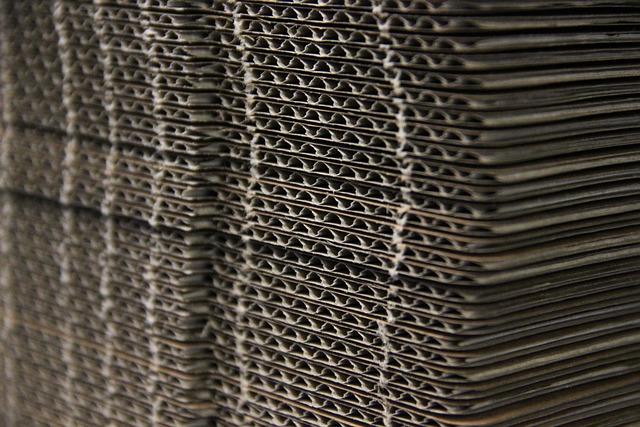Integrating automation to increase throughput and consistency
Automation in packaging can raise throughput and standardize results across production lines. This article outlines practical steps, design and material considerations, compliance impacts, and real-world cost perspectives for teams planning packaging automation.

Automation is reshaping packaging operations by improving speed, repeatability, and predictability. Integrating automated systems—from robotic pick-and-place cells to conveyor-fed case packers—helps reduce manual variability while enabling higher daily output. Successful integration balances machinery, process design, and workforce training so the line delivers consistent pack quality without creating new bottlenecks or compliance gaps. This article examines how automation affects throughput, consistency, and related areas such as sustainability and logistics.
How does automation affect throughput and efficiency?
Automation increases throughput by reducing cycle time per unit and by enabling continuous operation with fewer stoppages. Machines perform repetitive tasks such as taping, sealing, and case erecting faster than manual teams and can be synchronized to upstream and downstream equipment to maintain steady flow. Efficiency gains depend on proper line balancing: sensor feedback, PLC coordination, and buffer strategies that prevent starved or blocked stations. Well-designed automation also frees human operators for inspection and exception handling, which improves overall line utilization and reduces slowdowns caused by fatigue or inconsistent manual pacing.
What role does design and materials play in consistency and durability?
Packaging design and material selection directly influence how reliably automated systems can handle products. Consistent board grades, correct flute profiles, and uniform bag dimensions help feeders and erecting machines perform predictably. Durable materials that resist tearing, crushing, or humidity-related deformation reduce jams and rejects. Design choices—such as standardized fold patterns, reinforced corners, or protective inserts—can simplify gripper programming and reduce the number of sensors required to verify correct orientation, improving consistency across runs and SKU changes.
How does automation support quality, testing, and compliance?
Automated inspection systems (vision, weight-checks, leak testing) provide repeatable quality checks that are harder to sustain manually. Integrating inline testing enables real-time rejection of nonconforming units and automated logging for traceability, which supports compliance regimes and audits. Software-driven records reduce paperwork errors and help demonstrate adherence to regulatory requirements in sectors such as food, cosmetics, and hazardous goods. Careful specification of inspection tolerances and calibration schedules keeps automated quality systems reliable over time.
Can automation improve protection, labeling, and logistics handling?
Automation enhances protective packaging by enabling precise placement of cushions, automated dispensing of void-fill, and consistent sealing that preserves product integrity during transport. Automated labeling applicators ensure readable, correctly positioned labels that support scanning and traceability through logistics networks and ecommerce platforms. Integration with warehouse management systems (WMS) and conveyors allows automated case routing and palletizing, simplifying downstream handling and reducing damage and mispicks during distribution.
How does sustainable packaging integrate with automated systems and recycling goals?
Sustainability considerations affect machine choice and line configuration. Automation can be tuned to use right-sized boxes, reduce filler material, and support recyclable substrates; for example, on-demand boxmakers minimize void space and shipping weight. However, transitioning to recyclable materials may require adjustments to sealing methods or clamp pressures, and some biodegradable films behave differently in automated dispensers. Planning includes material testing and process validation to ensure recyclability targets and lifecycle goals are compatible with automated throughput and durability requirements.
Real-world costs, pricing insights, and provider comparison
Estimating automation costs involves equipment purchase, integration, software, training, and ongoing maintenance. Small inline upgrades (labelers, case sealers) can be a lower initial investment, while full robotic palletizing or end-of-line automation carries higher capital and integration costs. For ecommerce operations, consider modular solutions that scale with SKU growth and peak season demands. Below is a factual comparison of representative providers and product classes to illustrate typical market options and cost ranges.
| Product/Service | Provider | Cost Estimation |
|---|---|---|
| On-demand right-sized box system | Packsize | $25,000 – $200,000+ |
| Protective void-fill & automated dispenser | Ranpak / Pregis | $8,000 – $80,000 |
| Robotic case packing or palletizing cell | FANUC / KUKA / ABB | $50,000 – $400,000+ |
| End-of-line automated case erector/sealer | Syntegon (Bosch) / Sealed Air | $15,000 – $250,000 |
Prices, rates, or cost estimates mentioned in this article are based on the latest available information but may change over time. Independent research is advised before making financial decisions.
Conclusion
Integrating automation to raise throughput and consistency requires aligning machinery, materials, and process controls with business objectives such as sustainability, compliance, and ecommerce fulfillment. Planning should include materials testing, quality verification, and logistics mapping to prevent new constraints. Careful selection of modular automation, clear performance metrics, and ongoing maintenance and training will help teams maintain consistent output while adapting to evolving packaging and recycling requirements.






